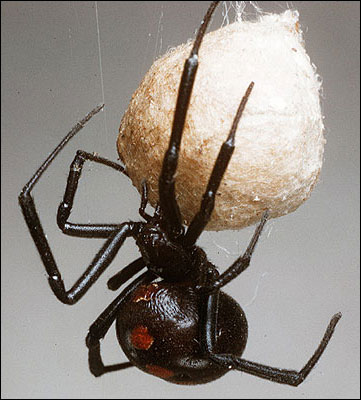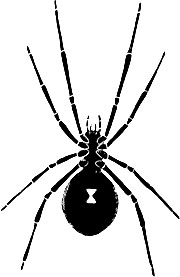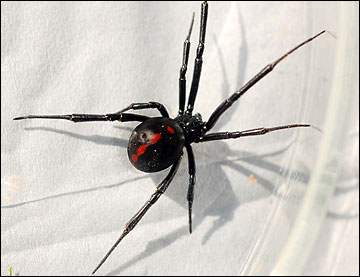Black widow (Latrodectus mactans)
Poisonous spiders

The black widow, Latrodectus mactans, is one of two poisonous spiders found in Missouri.

 The female black widow is jet black with a red hourglass-shaped marking on the underside of the abdomen. Some specimens have various other small red spots, particularly on the top surface of the abdomen. The abdomen is generally much larger than the cephalothorax. Males are much smaller than females and usually have yellow and red bands and spots over the body. Immature black widows have similar markings. Only the females are venomous.
The female black widow is jet black with a red hourglass-shaped marking on the underside of the abdomen. Some specimens have various other small red spots, particularly on the top surface of the abdomen. The abdomen is generally much larger than the cephalothorax. Males are much smaller than females and usually have yellow and red bands and spots over the body. Immature black widows have similar markings. Only the females are venomous.
The black widow lives in undisturbed locations under trash, litter, boards and rocks. Little-used buildings may be infested as well as crawl spaces, cellars and basements. These spiders construct an irregular web in spaces between objects. They typically do not leave the web. Female black widow spiders are shy and nocturnal. Bites usually occur when humans come into direct contact with the web or when the spider is unknowingly pinned against their skin.
The poison of the black widow spider affects nervous system function. The bite causes severe pain in the vicinity of the bite, accompanied later by dizziness, nausea, blurred vision and breathing difficulty. A physician should be contacted immediately following a suspected bite. When this happens, fatalities are rare and recovery is usually quick and complete.